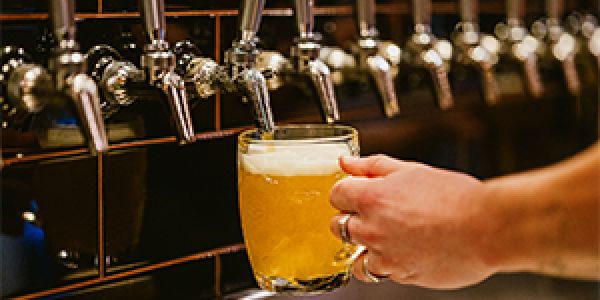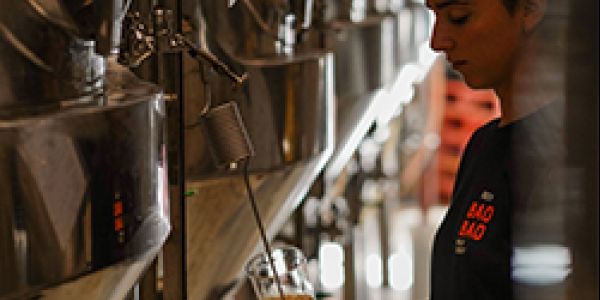
Firstly, the storage of beer shouldn’t be confused with the aging of beer. Beer storage is centred around preventing negative changes over short periods of time and keeping your beer as the best representation of how the brewery intended, whereas the aging of beer is the deliberate process of improving certain beer styles over time to increase complexity and refinement of desirable attributes of the beer.
Most beer is at its best the moment it leaves the brewery and has a limited shelf life of 3-6 months before it starts to deteriorate to sight, smell and taste. Important to note is that some beer styles can last for years if cellared and cared for correctly. We are looking at the majority of beer styles produced and consumed in Australia (Lager, Pale Ale, IPAs, Hazy Pales, NEIPAs, etc) all of which need care to prolong their life for our enjoyment.
‘Beer Storage’ should be perceived as keeping your beer as fresh as possible for as long as possible. You don’t want your Indie brews spoiling before you get the chance to appreciate them so let’s look at some of the fundamental concepts of caring for your beer in the short term to make sure that you have the best beer-drinking experience possible.
Worthy of note, there’s been a huge evolution in beer packaging and perception over the last decade in Australia, and beers come packaged in different containers, namely cans and bottles (capped or corked). These tips are designed to encompass both cans and bottles and should prolong your beer’s shelf/fridge life and reward your tastebuds as a result.
Let’s look at some key ways to minimise off-flavours and taints.
- Find a beer dealer that keeps their stock refrigerated or cellared in an environment designed for keeping beer fresh. Ask your retailer if the beer was transported cold and how it’s been stored..
- Look for the manufacturing date or best-before date (usually on the bottom of the can or printed directly to bottle). The beer style makes a big difference to how quickly a beer will spoil. Most beers will still be suitable for 4-6 months, but some styles like a Hazy/NEIPA will generally be past its best representation after about 3 months. Hop characters are the first to deteriorate with age.
- Beer should never come into contact with heat or light, both will degrade your beer quickly! Direct sunlight and strong artificial light should be avoided. If you’ve ever experienced a "skunky" beer, this is often a sign of a "light-struck" beer. Cans offer the best protection from light, as do brown bottles.
- Keep your beers cool! The refrigerator is probably best for a home environment, otherwise store beer in the coolest, driest and darkest area available in the house.
- Help fight against oxidisation. The result of oxidisation is stale notes described as papery, cardboard-like or leathery. Where possible, store your beer upright as this decreases the amount surface area to volume ratio of beer exposed to air in the ullage (unfilled air space at the top of bottle or can), and thus slows the oxidation of the beer. Storing upright will also ensure that any Trub/Lees (yeast sediment) compacts to the bottom of the bottle or can.
Let’s recap! Some tips to keep in mind.
Minimise contact with heat and light. KEEP BEER IN THE DARK!
Stay colder for longer. FRIDGE STORAGE! DRINK FRESH!
Minimise oxidation and sediment. STORE BEER UPRIGHT!





